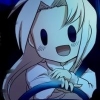Oil Control In Rb's For Circuit Drag Or Drift
Announcements
-
Similar Content
-
Latest Posts
-
Ok got some old tyres for you guys...my car has been sitting around un-driven for about 6 years now. I had it on the original rims with the shitty compliance tyres it got it with back in 2006, which were manufactured in 2004... Sidewalls eventually rotted and split open, obviously no air in them and the rims were holding the car up. Just swapped them with some 17" Work rims and tyres which are probably 10+ years old too but at least holding air
-
Was not scared..... 😬😬😬 20250222_153105.mp4 Now what.......?
-










Recommended Posts
Create an account or sign in to comment
You need to be a member in order to leave a comment
Create an account
Sign up for a new account in our community. It's easy!
Register a new accountSign in
Already have an account? Sign in here.
Sign In Now